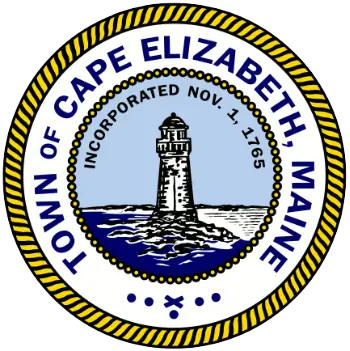Published on October 31, 2021

Following a Public Hearing on October 13, 2021 for the proposed Second Amendment to the Town Center Tax Increment Financing District (TIF) for the Dunham Court development, the Town Council held an extra workshop on Wednesday, October 27. The intention of this workshop was to review financing options which might reduce the amount of interest paid using a TIF and therefore, the total amount of TIF funds required.
Dunham Court affordable housing project is proposed in the Town Center District, where the Town Center TIF is already in place. The Town Center TIF District would be amended to allow: the Town to enter into a Credit Enhancement Agreement (CEA) with Szanton Monks Properties, LLC (the Dunham Court developer); to expand the allowed expenditures from the TIF proceeds to include affordable housing; and to extend the Town Center TIF from 20 to 25 years. As currently drafted, the Credit Enhancement Agreement has a term of 15 years, with 75% of tax revenue returned to the developer to pay a $802,000 mortgage from Maine State Housing Authority, fully amortizing with 5.5% interest. At the end of the 15-year period, the Town would receive 100% of the tax revenue from the property.
In response to questions from the public, Chair Jamie Garvin asked that Kristin Martin and Nathan Szanton of The Szanton Company to explain the variance between the current requested TIF number and earlier TIF requests.
Martin explained that the reason the requested TIF of $802,000 had gone up by over $500,00 from the original proposal was that, “Sources that come into the project reduce when you reduce the unit count.” Guided by input from Town Council and residents, the Dunham Court changed the number of total units from 49 to 46 in order to offer three three-bedroom units and eight two-bedroom units. Although construction costs are relatively the same if the number of units changes, reducing the number of units decreases the amount of subsidy available. According to Martin, “Subsidy coming from Maine Housing Authority is awarded on a per-unit basis; so every reduction in units results in a reduction of subsidy — and equity for a tax credit adjusts and a higher TIF is required to fill that gap.” Additionally, Szanton added, “The smaller effect of lowering the number of units, is the lowering of income — which also has a negative effect on the numbers.” Garvin pointed out that the three three-bedroom units are all intended to be affordable rather than market rate, “Not only are you reducing the amount of expected income, you are reducing it to the lowest possible amount because you are taking what could have been market one bedrooms and turning them into affordable three-bedrooms.”
Furthermore, Martin said that as a result of reduced income, the amount of mortgage they can take on also reduces; “Maine Housing Authority requires a debt service coverage ratio; so as expected income of a property goes down it reduces our ability to take on debt from Main Housing Authority - therefore driving up the TIF size.” Councilor Nicole Boucher pointed out another impact on the TIF size is the, “Change from 25% based on a 30-year term to 75% based on a 15-year term.”
As the workshop progressed, Garvin credited resident Kevin Justh for having provided the council with useful TIF analysis during prior meetings. As a result of citizens requesting to know what Justh’s analysis was based on, Garvin asked Justh to review his comparative analysis for the public [meeting materials]. Justh began by clarifying that he has no affiliation with Mr. Szanton, the development company, or with any of the groups involved with the development, “This is strictly my analysis. The idea wasn’t precision; it wasn’t to get exact tax implications of what every possible thing would be. It was a comparative analysis based on the actual tax analysis that the town had done for Dunham Court versus other things.” Scenario one shows the TIF proposal as it is currently proposed. A second scenario shows what the numbers might look like if the Town is the direct TIF lender with zero percent interest. The third shows a direct investment analysis and the value of that option. The remaining scenarios are based on potential alternative developments. Based on his analysis, Justh concluded, “The absolute worst-case is tax neutral, and I couldn’t find a scenario that was tax negative with a TIF.” Justh is employed by PNC where he is the manager of their multi-family affordable housing financing in the Northeast. Justh has a Masters degree from Johns Hopkins University in real estate with an emphasis on tax increment financing.
Following Justh’s presentation, the Town Council discussed options as outlined in an October 19 Memo from Town Planner Maureen O’Meara.
Option One is a Traditional TIF/Credit Enhancement Agreement with a mortgage from Maine State Housing Authority - as outlined during the October 13 Public Hearing.
Option Two is also a traditional TIF/Credit Enhancement Agreement but with a mortgage coming from the Town of Cape Elizabeth — using the same 75%, 15-year CEA.
Option Three includes grant funding through the Town of Cape Elizabeth utilizing one of the following funding sources:
- Unassigned funds
- American Recovery Plan Act of 2021 funds (ARPA)
- General revenue via Fiscal Year 2022 budget
O’Meara reminded the council that per Town Charter, Sec. 2, a single capital expenditure in excess of one million dollars requires it to be submitted to a referendum. Town Manager Matthew Sturgis cautioned against using unassigned funds or ARPA funding as it jeopardizes future projects or unanticipated needs. Sturgis said, “The strongest recommendation that I can make, also in speaking with Finance Director John Quartararo, is going with the traditional format of a credit enhancement agreement; working within the TIF district and specifically spelling out the needs and uses of how the remaining funds can be used.” Garvin added that, "TIF zones and credit enhancement agreements are very standard and commonplace mechanisms for funding these types of developments. While I think it was worthy to look at other ways to potentially reach the same outcome, there is a reason why these are so commonly and practically used in other developments that are similar and that’s the conclusion I came to as well."
Attorney Alyssa Tibbetts of Jensen Baird, explained that if the council decides to stay with the same TIF and Credit Enhancement Agreement on which the October 13 Public Hearing was based, that the council could render one vote at the next Town Council meeting. With no councilors in objection to the structure of the proposed Second Amendment to the Town Center TIF, Garvin and the council agreed that they are prepared to vote at the next Town Council meeting on Monday, November 8.
